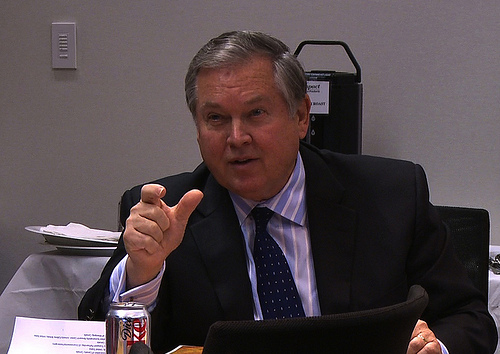For years, state DOTs have exploited a loophole of federal government policy that allowed them to build massive, publicly funded projects without accommodating non-motorized users as long as they could show that "due consideration" had been given to bicyclists and pedestrians.
But last year, USDOT gave that requirement some teeth. USDOT issued a directive specifying that "due consideration" should include "the presumption that bicyclists and pedestrians will be accommodated" in project designs paid for with federal government dollars.

Well, surprise! State DOTs aren't happy about it. In a supplement [PDF] to a letter [PDF] to USDOT yesterday, John Horsley, executive director of the Association of State Highway and Transportation Officials, urged federal officials to reconsider the requirement. "This regulation presents an undue burden on states to justify exceptional circumstances when not including provisions for bicyclists and pedestrians in a project," he said.
Someone should tell Horsley, that was sort of the point. USDOT is trying to make it hard for state DOTs -- using money from both taxpayers who drive and those who don't -- to completely ignore the needs of non-drivers.
In its directive, USDOT states that walking and bicycling should be considered equal to other modes.
"The establishment of well-connected walking and bicycling networks is an important component for livable communities, and their design should be a part of Federal-aid project developments," said Transportation Secretary Ray LaHood. "Transportation programs and facilities should accommodate people of all ages and abilities, including people too young to drive, people who cannot drive, and people who choose not to drive."
When asked about AASHTO's objection to the new rule, spokeman Lloyd Brown said it was part of a list of recommendations that came from the organization's members: state DOTs.
(Thanks to the Fairfax Advocates for Better Bicycling Blog for alerting us to this story.)





